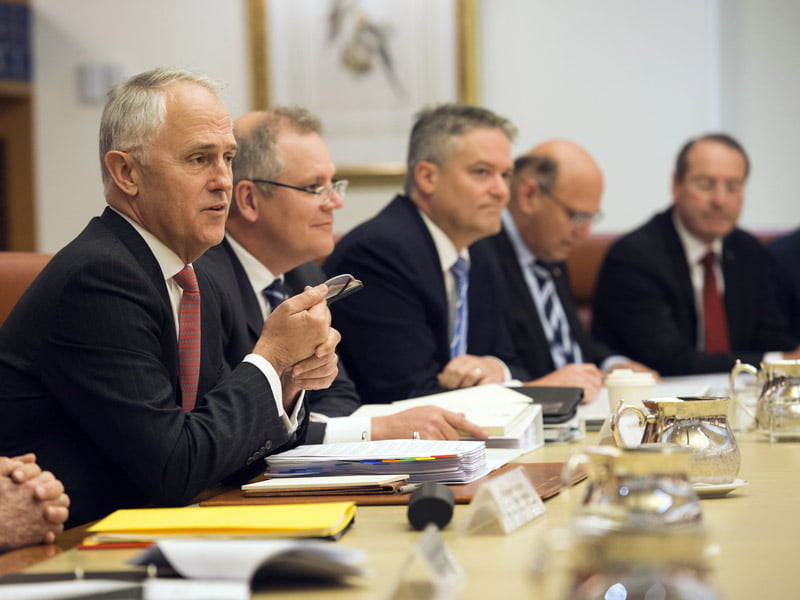The Turnbull Government has taken its first cautious steps toward an overdue reformation of tech procurement practices, with opportunities creaking open for local SME’s and a new model for engaging innovative startups.
The Prime Minister’s Innovation Statement acknowledges that the complexity of the existing system made it difficult for smaller companies to participate in government tenders. He acknowledged that it was not clear the current system delivered value for money on the Commonwealth’s $5 billion annual technology budget.
The changes are modest and cautious. But they do address a problem that government has previously insisted it does not have.

One very glaring omission was a mechanism for enabling an expedited discretionary spend (up to a value of, say, $300k to $500k) to startups and SMEs on innovative projects that did not have to go to tender. It may be that this is something that comes up later, with a more complete re-write of the Commonwealth’s procurement manual.
And it may also be that the departments are simply not trusted to meet value-for-money objectives without these additional safeguards. It is certainly something that you would expect to be re-visited later.
The Business Research and Innovation Initiative (BRII) is most interesting – but is remarkable in its tiny scale. The scheme effectively sets up policy “challenges” that carry a reward for most innovative proposal. The reward is then used to fund a prototype or minimum viable product.
It is more than slightly weird that previous Australia Governments have resisted such a program. It is loosely based on a Small Business Innovation Research (SBIR) program in the US which has been used to great effect to build strategic expertise.
The SBIR has for years given small US companies access to government contracts to support them in areas of strategic interest to government. Symantec and Qualcomm are global giants now, but were once recipients of SBIR grants. (Weirder still, the Australian Government has previously against such schemes, arguing they breach Australia’s free trade commitments with the US – even while the US was happily using its own scheme to support its local innovators.)
This is a good scheme. The Government will work with Bill Ferris’ Innovation and Science Australia to identify just FIVE national policy and service delivery challenges, and to invite proposals for solutions.
Winners would receive $100,000 to work on the development, and could be eligible for a further $1 million to do a prototype.
You can only think this scheme has started small, and will perhaps be expanded as it gets better understood.
It is of course instructive that the process of identifying the five policy challenges has been taken out of the hands of public servants and given to Innovation and Science Australia. This will at least ensure it gets applied to tech development or policy areas of strategic value to Australia.
It is not clear where this scheme is to be administered – although its $19 million budget allocation sits in the Industry department. If Bill Ferris’ Innovation and Science Australia is to have a CEO and its own administrative arm, then it might make sense that it is run through the ISA. No detail yet.
It is good news that the Digital Transformation Office has no role in this Business Research and Innovation Initiative. This is not their thing.
But, speaking of the DTO. It gets to build the new Digital Marketplace, the online directory of digital and technology services. It is based on the UK Government’s G-Cloud model.
The Digital Directory doesn’t give preferential treatment to local SMEs, but it should remove some of the barriers to dealing with government (that is, it should make it simpler and therefore cheaper.)
As part of the program:
• the directory will break down large scale IT solutions into individual components which scales down the procurement and allows for greater scope of innovation
• business suppliers of software and hardware will be able to join the directory easily
• government buyers will be able to easily search for services, identify suitable suppliers and procure the best value for money option for the project
The DTO is on a deadline. It is expected to have a live alpha version of the Digital Marketplace by the middle of next year and a full launch by January 2017. The Digital Marketplace has a budget over the forward estimates of $15 million, including $3 million this year and $5 million next year to get the job done.
The DTO is an unknowable agency right now, shut down to the outside world. To be fair, it hasn’t done anything yet. It has no interest in talking to media, preferring to do its transforming in its own opaque world.
It provides zero detail of any of its so-called exemplar projects. Nothing.
The only window into DTO is through its blog, where you can read about things like “DTO is the incubator and government is the startup.” Yep, that’s right. Someone in the DTO thinks the Australian Government is a startup.
Holy crap, that’s funny.
Meanwhile, critics of the DTO are complaining loudly about all the babies that are being chucked out with the bathwater.
But the DTO has been charged with being an agent of cultural change inside government. So I guess the squealing we can all hear is the sound of culture being changed. It’s a process.
It needs to be given time.
The first we will hear about actual progress – and perhaps get a glimpse inside – will be the first Senate Estimates hearings next year, just in time to celebrate the first birthday of the DTO announcement.
Do you know more? Contact James Riley via Email.

